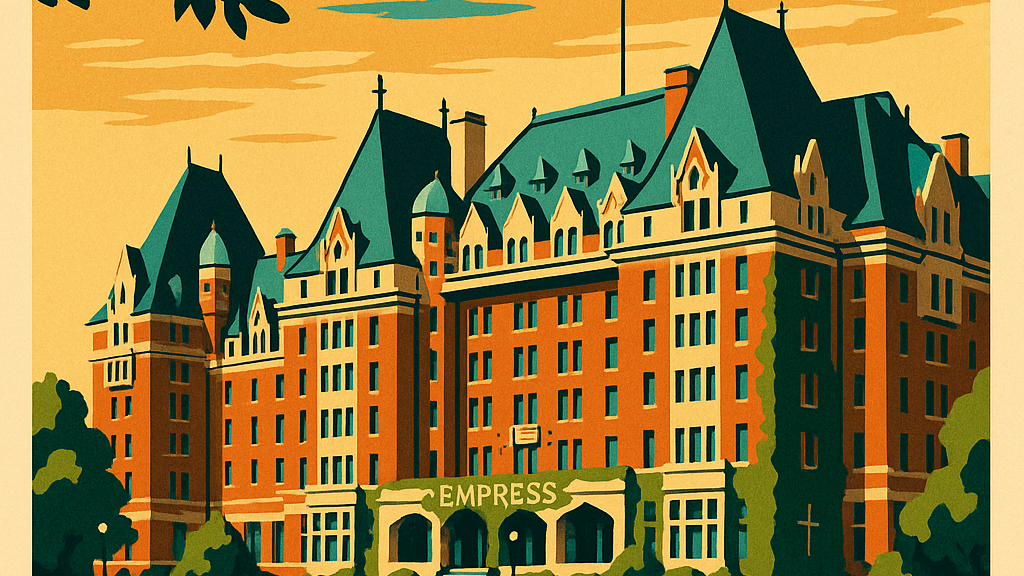
Steel, Stone & Steam: How Canada’s Grandest Hotels Helped Build a Nation.
Share
At Elliott Best, we’re inspired by the stories that helped shape Canada. And none was more grand or ambitious than the creation of the Canadian Pacific Railway (CPR) and its monumental hotels. *
It was the first tangible connection that joined Quebec to British Columbia. The train line and hotels were symbols of optimism, ambition, and a young country coming into its own.
The Canadian Pacific Railway, completed in 1885, physically connected the country from east to west. But the CPR's leadership knew it had to be more than a transport line — it had to be a cultural artery. The solution? Grand hotels built along the route, offering not only luxurious rest stops but unforgettable views of the nation’s wild beauty.
This vision inspired our CPR Grand Dames art collection. From the gothic elegance of The Château Frontenac to the imposing grace of The Royal York in Toronto, to the ivy-covered splendor of The Empress in Victoria, B.C. These artworks were created to reflect the era's romantic vision — and its contradictions. Our pieces celebrate the design, the drama, and the historical impact of these legendary landmarks.
These hotels helped bring Canada to the world. Tourists, dignitaries, and businesspeople could now cross the country in style, building east-west connections while also strengthening the north-south pull of American visitors. The hotels were cultural markers that embodied Canada’s aspirations as a nation.
It is also essential to acknowledge the darker side of this story. The CPR’s expansion, and by extension, the construction of these hotels often came at the expense of Indigenous communities. Lands were taken, treaties ignored or reinterpreted, and traditional ways of life were disrupted. Some hotels, including The Empress and Château Lake Louise, were built on or near lands historically occupied by Indigenous peoples without proper consultation or compensation.
To this day, efforts are underway to address this legacy. For example, some Fairmont properties have partnered with Indigenous tourism associations, hosted land acknowledgements, or worked with First Nations artisans and chefs. These steps are valuable, but they are only beginnings. True reconciliation requires transparency, respect, and ongoing collaboration.
Our work at Elliott Best aims to honour the full complexity of Canadian history. With our new series, we invite you to revisit Canada’s journey as a nation. Through rail and stone, ambition and artistry.
/EB
*Sources: Canadian Pacific Historical Association. Parks Canada Heritage Architecture Reports. Fairmont Hotels Historical Archives. Indigenous Tourism Association of Canada. Truth and Reconciliation Commission of Canada. Pierre Berton, *The National Dream* (1970).